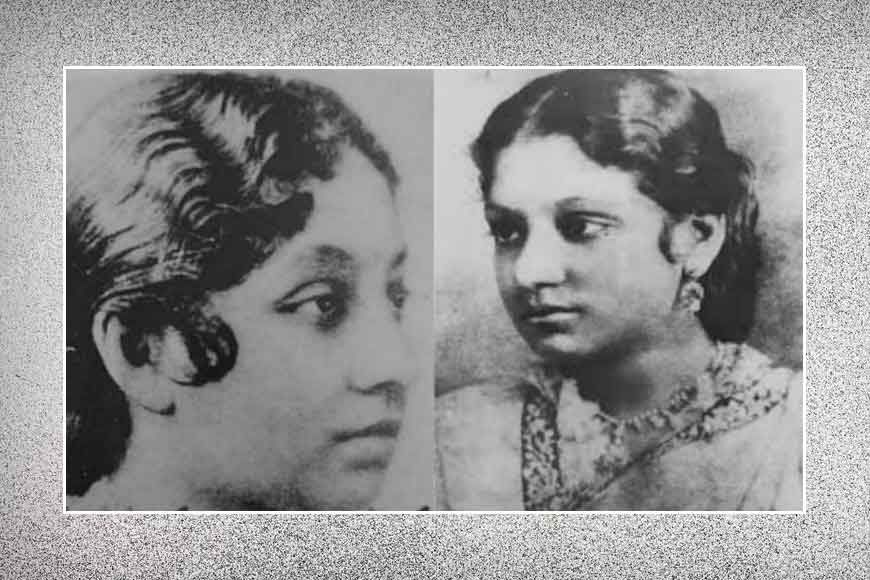The Forgotten Tagore Sisters: The Untold Stories of Binayani and Sunayani Tagore – GetBengal story

The women of the Tagore household who chose to stay in the ‘Andarmahal’ often created works of literary and artistic genius. Although popular history has forgotten these women, they had a significant cultural impact on the arts. The residents of Joransanko Thakurbari played a very significant role in 'The Bengal Renaissance', and even the household women—who were encouraged to study, write, or paint—contributed to the arts. For the most part, they received the best education possible, including instruction in English, which was unusual back then. Yet despite the modern outlook of most of the Tagores, the women and their creations have remained anonymous. Maybe because Rabindranath, Abanindranath, and Gaganendranath were such larger-than-life personalities, the women who remained inside were never recognised for their literary geniuses. Not much has been written about them.
That's the story of two sisters in the Tagore household: Binayani and Sunayani, daughters of Gunendranath Tagore and Soudamini. Binayani was to marry Seshandrabhushan, but just before the union, at the age of 36, her father, Gunendranath, committed suicide. This harrowing incident scarred Binayani's heart, and even though she got married later, she could not get over the pain and took to writing. Her daughter, Pratima Devi, spoke of her mother’s anguish in her autobiographical tales.
Binayani wrote about her father’s sudden death. Although she fulfilled her duties as a wife after her marriage and spent her days in the Andarmahal, worshipping and cooking, her creative mind spoke otherwise. She would also arrange and style hair for the women in the household. She had named these ‘khopas’ or buns as ‘Benebagan,’ ‘Monbholano,’ ‘Fanshjaal’ and ‘Kalka.’ She would embellish the buns with flowers and garlands to make them look even more beautiful. Along with her artistic talent, Binayani was also a creative writer, and when she was around 45 years old, she started writing an autobiography. By then, some Bengali women had already written their biographies, like Rashsundari and Keshab Chandra Sen’s mother, Saradasundari. Rabindranath Tagore’s elder sister, Saudamini, had written ‘Pitri Smriti, while Swarnakumari Devi had written ‘Shekele Katha.’
Binayani Devi started writing her autobiography and named it ‘Kahini', but did not publish it; she avoided the limelight. For her, this memoir was a way of venting her own pain and void—her struggles with life that she endured in silence.
Considered to be one of the best documentations about women, in her writing, we get a vivid description of winter mornings, of a Sandhya Arati, of Sridhar Thakur’s puja, of the silver Pradip, and of the small elements that bound the lives of women in those days. It is an extremely nostalgic piece, and Binayani had a vivid yet lyrical way of writing.
She wrote about the terrible pain of losing her husband: “Since yesterday, his illness has taken a bad turn. He asked me not to leave his side. The next day, around 6 p.m., he suddenly left. His hands were in mine, and he tried to say something to me, but I did not understand what he said. All my happiness was left with him, and I became a resolute woman. I kept thinking about life and death, about coming and going like a bunch of grass that opens and leaves and then comes back to make the bunch. Then why are we overwhelmed with our loss?”
Binayani’s writing was highly philosophical. Her creativity is a testament to the 20th-century Bengali woman and her thoughts.
Her sister, Sunayani, was an artist, and her paintings spoke the same language as Abanindranath and Gaganendranath Tagore. She did not have any formal training in the arts. First, she tried her hand at painting the Hindu gods and goddesses, though the Tagore household was strictly Brahmo. Her paintings were unique, and she did not copy anyone. She did not follow any foreign art form; rather, she brought to life Bengal’s Patachitra. Like the Patuas, the figure sketches she made had doe-shaped eyes, like Jamini Roy did. Chitra Deb, in her book ‘Thakurbarir Andarmahal’ writes that “it was Sunayani Devi who brought the art of doe-shaped eyes much before Jamini Roy did.”
Sunayani was also far from the limelight, but her brothers Aban Tagore and Gagan Tagore encouraged her to continue her art. Abanindranath, who was then a part of Kolkata’s Art College, said: “The kind of paintings Sunayani is doing do not need any approval or certificate. The countrymen and viewers will certify her for her excellence.” Rajani Mohan, Sunayani's husband, was also very encouraging. She was appreciated worldwide. Art critic Stella Kramrish spoke of her paintings, and another critic, Mrs. Cocksitter, organised an art show for Sunayani at London’s Women’s Art Club in 1927. She got rave reviews from British critics, and many other countries invited her to do art shows in their nations. But Sunayani, like her sister, did not enjoy the attention and only wanted to express herself through her art.
(Data from the Jorasankor Journal by Mahua Dasgupta)











